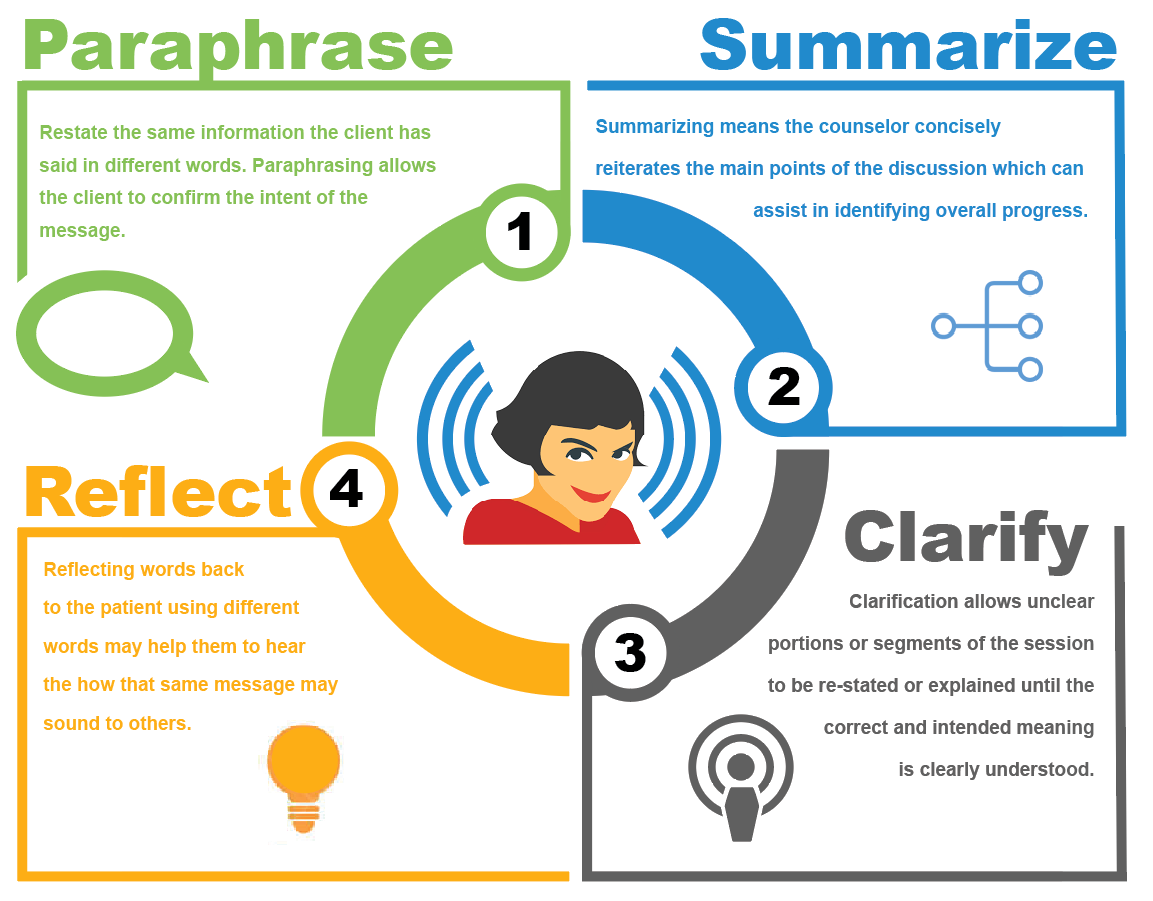
“I’m only coming to group today because my doctor and my wife are both pressuring me.” The facilitator has asked group members to share their goals for attending, and the last client to speak says: Here’s an illustrative example of a hypothetical client who is coming to the first session of a support group for people living with heart disease. Note that a facilitator might decide to use any one of these approaches (and within each category are a myriad of alternate ways of responding)…that’s the artful strategy part! Reflecting group content versus group process. Reflecting an individual’s comments versus content taken from the group’s overall contributionsģ.

I’ve come up with three general categories for practicing reflective listening in groups (and I’m sure that there are more):Ģ.

But, looked at another way, groups give us even more options and opportunities to use this important skill. Reflective listening in groups ups the ante because of their interpersonal complexity. This video example of an angry client demonstrates how the practitioner uses lots of reflective listening to establish understanding and build rapport. Here’s an analogy: simple reflections are like the tip of an iceberg – the content “above the waterline” – while complex reflections go deeper. We all want to feel understood, and reflective listening helps bridge the communication gap in a respectful and validating way.
REFLECTIVE LISTENING FULL
These types of complex reflections demand our full listening attention and focus on the other. Really impactful reflective listening goes further than paraphrasing, and mirrors back the implied meaning beneath a person’s words exploring the emotions, assumptions, ideas, hopes, concerns or wishes. This type of response is also a good alternative to the “ Righting Reflex”!ĭone artfully, the skill of reflective listening looks easy but is far from it (at least in my own experience). Reflective listening is a way to check back and make sure that we’ve understood what someone else tells us. In its simplest form, it’s a response that paraphrases or mirrors the spoken content of a person’s statement. This multilayered complexity, whether in education or clinical contexts, is a big part of what makes groups so energizing and exciting. Furthermore, facilitators need to respond to the “two clients” – the individual, and the group – and attend to both content and process.

Group facilitation is more about listening than speakingįacilitating groups is a delicate art: groups progress through certain well-defined stages of development, and our style as facilitators needs to be pitched to where the group is at. Reflective Listening: The most powerful tool in the tool-box? TO LISTEN Ears + Eyes + Undivided Attention + Heart


 0 kommentar(er)
0 kommentar(er)
